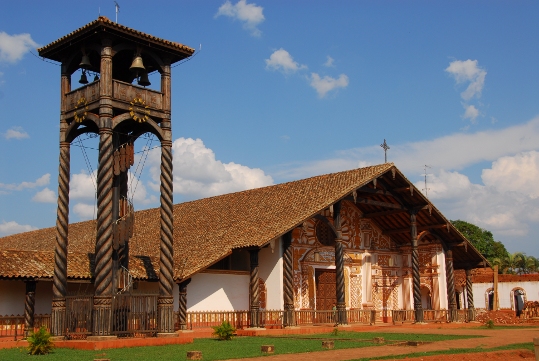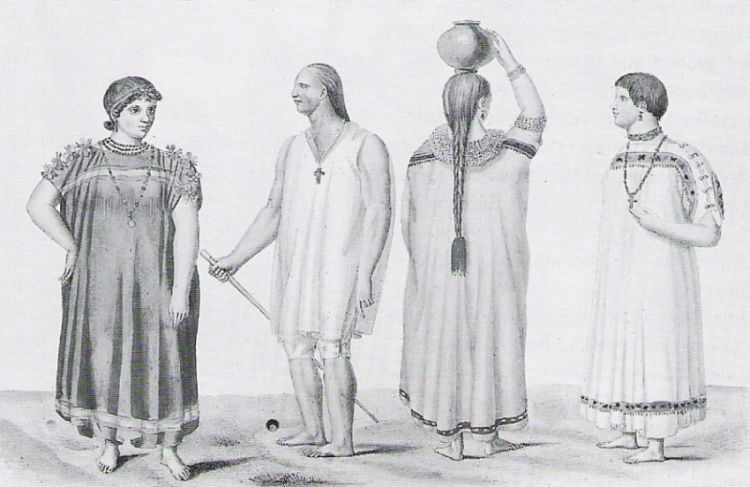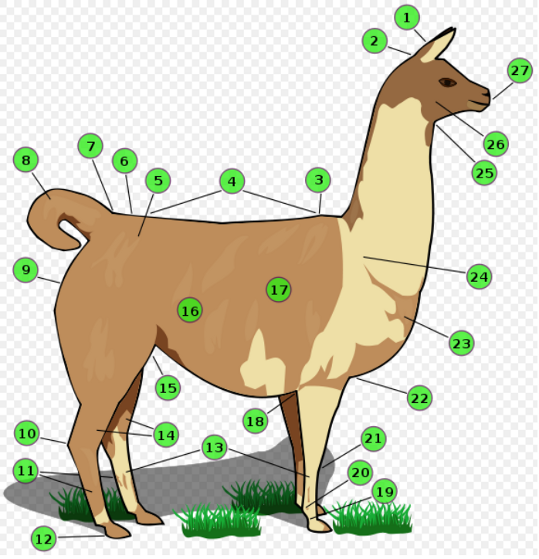A trip to Bolivia
20130129
29 janvier 2013 17:04 0 messages
We spent an hour listening to I- who spoke about their four-wheel drive last October with 20°C in daytime. In winter it would have been much colder.
| She showed us pictures of the missions and their bell-towers, built in wood by the Jesuits in the 17th and 18th century, in wood. |
 |
Martin Schmid, also known as Esmid (1694–1772) was a Swiss Jesuit, missionary, musician and architect, who worked mainly in the Chiquitos Province.
In Madrid, around 1729, he helped to translate the history of the tribe of the Chiquitos of Juan Patricio Fernández, into the German language. During his first years in Bolivia, building churches and music lessons were his main fields of activity. He was also responsible for the spread of handicrafts.
| Un indien et trois indiennes de la province de Chiquitos (Bolibia), 1846, Atlas de la partie historique, Costumes, par Alcide d’Orbigny |
 |
Alcide d’Orbigny was a paleontologist : Élève de CUVIER, Il fait paraître en 1826, dans les Annales de sciences naturelles un travail qui est le fruit de ses observations sur les foraminifères intitulé Tableau méthodique de la classe des Céphalopodes décrivant plusieurs centaines d’espèces nouvelles et qui le fera remarquer dans le monde naturaliste. Il y présente environ 600 espèces, actuelles ou fossiles. Durant sa vie, il recensera plus de 1 500 foraminifères, la plupart nouveaux. Il est ainsi considéré comme l’inventeur de la micropaléontologie. Outre cette première publication, il réalise, grâce à des sculptures dans de l’argile, des modèles en trois dimensions de certains spécimens. Des répliques en plâtre sont commercialisées.
We admired her photos of beautiful flowers such as :
- Bougainvillea (pron. : /ˌbuːɡɨnˈvɪliə/)
- Caesalpinia pulcherrima is a species of flowering plant in the pea family, Fabaceae, that is native to the tropics and subtropics of the Americas. Common names for this species include Poinciana, Peacock Flower, Red Bird of Paradise, Mexican Bird of Paradise, Dwarf Poinciana, Pride of Barbados, and flamboyant-de-jardin.
She showed us as well several pictures of old villages in the mountains, where everything is cheap for tourists, 1 euro a meal, with the same menu every day, meat of llama and rice. On market days, in villages, one can see lots of animals : donkeys, cows, pigs...
Their group of visitors went through the salt lake of El Salar : everything is white ; one needs sunglasses to protect one’s eyes. There are no directions, you must travel with a map and the sun... and a compass. There are some « islands » with cacti in bloom. At night, they would sleep in small hotels and in the morning their cars were covered with dust. It was a hard live for Peruvian workers who kept gathering piles of salt, which was taken away in trucks to be sold.
It was a very dull, monotonous landscape.
The Salar was formed by transformations of several prehistoric lakes. It is covered by a few meters of salt crust, which has an extraordinary flatness with the average altitude variations within one meter over the entire area of the Salar. The crust serves as a source of salt and covers a pool of brine, which is exceptionally rich in lithium.
- Digression about "Retour en terre inconnue, Gérard Jugnot chez les Chipayas" which several of us had seen on TV.
camelidae : vicuña, llama, alpacas

I didn’t find the name of the special plants which are llamas’ favourite food but I found this drawing (http://commons.wikimedia.org/wiki/File:Llama_with_numbers.svg) of their body parts : 1 Ears - 2 Poll - 3 Withers - 4 Back - 5 Hip - 6 Croup - 7 Base of tail - 8 Tail - 9 Buttock - 10 Hock - 11 Metatarsal gland - 12 Heel - 13 Cannon bone - 14 Gaskin - 15 Stifle Joint - 16 Flank - 17 Barrel - 18 Elbow - 19 Pastern - 20 Fetlock - 21 Knee - 22 Chest - 23 Point of shoulder - 24 Shoulder - 25 Throat - 26 Cheek or Jowl - 27 Muzzle.
At the end of their trip, the group drove to the Pacific coast and saw the places where they grow rice.
Dans la même rubrique
23 avril 2013 – Spring posy
16 avril 2013 – THE LATE SIXTIES IN ENGLAND
26 mars 2013 – Geology in Oman
19 février 2013 – Lincoln et al
12 février 2013 – Champlain à Québec





